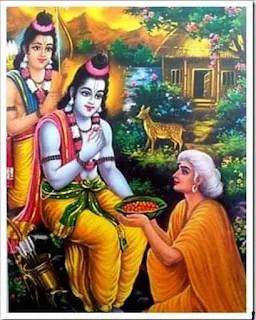Jagadacharya
Towards the end of His instruction to Arjuna, Krishna explains the truth that each jivatma is bound by one’s own duty and swabhava or inherent nature, pointed out Asuri Sri Madhavachariar in a discourse. These overpower the individual will and this is the reason why beings act in their personal ways. But the individual is also deluded about many issues of right and wrong in the course of his lifetime. Moreover, each one is bound by Prakriti acquired by one’s previous karmas and acts accordingly. Here, Krishna explains this esoteric truth through an interesting analogy.
Each one of us is seated on the wheel of Prakriti, a wheel that keeps spinning round and round by the power of the Supreme Lord who is the antaryami in all beings without any restrictions and exceptions. This is in accordance to the scriptures which explain that He exists, enabling by His Maya power, all beings who are mounted as it were on the machine Prakriti in the form of body and senses created by Him to act in accordance with their gunas of satva, rajas and tamas. Krishna then explains the way to get rid of Maya. He asks Arjuna to take refuge in Him with total faith and with his entire being, meaning, senses, mind and intellect.
In the famous verse ' Man-mana bhava Mat-bhakto,' He reveals His Supremacy when He promises unconditional protection to the jivatma whose focus is the Lord and hence is devoted to Him by paying obeisance and worshipping Him at all times. What greater fortune for the struggling jivatma than to be thus blessed by the boundless grace of the Supreme Ruler of all? Not only is there a promise of relief from all restlessness and sorrow pertaining to this world for those who seek His feet with devotion, more exceptional is His concern for each prapanna who is granted the highest attainment, His eternal abode.
ahamkara,
Sastras explain the workings of the human mind in great detail. Known as ‘chitta;’ the mind in each one of us is a two-pronged instrument. While it enables us to deal with the external world through the karmendriyas and jnanendriyas, it also has the power to make us look inward and experience the atma or self within.
In the text Ashtavakra Gita, it is shown that chitta vritti and its attendant activities plunge one into samsara and hence this has to be avoided, pointed out Sri R. Rajagopala Sarma in a discourse. All the millions of thoughts that keep flowing in the ordinary man’s mind like a never ending chain are the cause of bondage. The realised yogi does not encourage chitta vritti. He understands the atma from the viewpoint of the sastras as the non-doer ‘akartha,’ as well as the non-enjoyer ‘abhoktha’. So, he believes that as an individual, he is neither the doer, kartha, nor the enjoyer, bhoktha. Doership and enjoyment are present only when the individual aligns himself with the body and not the atma.
The very perception behind our actions such as seeing, hearing etc makes us say ‘I see this.’ I hear the music,’ and so on. The ahamkara factor is first active. From ahamkara, the sense of ‘Mine’ automatically follows. When the mind gives rise to the sense of I and Mine it gets entangled in bondage. To avoid this and become totally free, one has to destroy ahamkara and mamakara. The realised yogi is known as a Dheera whose vision about the fleeting quality of worldly enjoyment is clear. He sees joy and sorrow with equanimity and accepts these while he remains distant as a mere witness. His mind is mature and he enjoys the freedom of peace of mind gained by the absence of chitta vritti. He is wary of the bondage caused by attachment.
dhyana for salvation.
The Upanishads exhort us to practise sravana, manana and nididhyasana as the methods by which one can gain knowledge of the atma. Nididhyasana is the practice of dhyana when the mind is steeped in single mindedness about the Lord. There are many sadhanas available to the spiritual aspirant such as puja, stotra, japa, dhyana and so on to help his mind become proficient in meditation, said Sri B. Sundarkumar in a discourse.
Adi Sankara in his Gita Bashya states that when the object with which the mind is in communion is the most auspicious Supreme Lord, one reaches a high level of consciousness. Dhyana or meditation on the Lord is the best sadhana. The analogy of a lamp that remains without flickering is often used as a lakshana for dhyana and yoga. But we are exposed to Vedic texts and many schools of thought and philosophies that tend to confuse our approach in this regard. The yoga of meditation taught by Krishna helps to go beyond all these intellectual exercises and the Nishkama karma that is explained helps us to do our duty without attachment for the results of our action. Equanimity is the basis of all states of yoga. To act with equanimity is more important than any action.
When one is in this yoga, he is unperturbed by likes or dislikes, success or failure, etc. The quest is turned inwards and atma vichara is the key sadhana. To see how the atma is imperishable though it is associated with the body that is born, grows and dies, is the first lesson that is taught in this text. If one is confused about the nature of one’s self, it shows a lack of viveka. But if each jiva aims to know oneself as this undying self when undertaking any spiritual sadhana, the confusions can be transcended. This viveka protects the sadhana and leads to bhakti and salvation.

